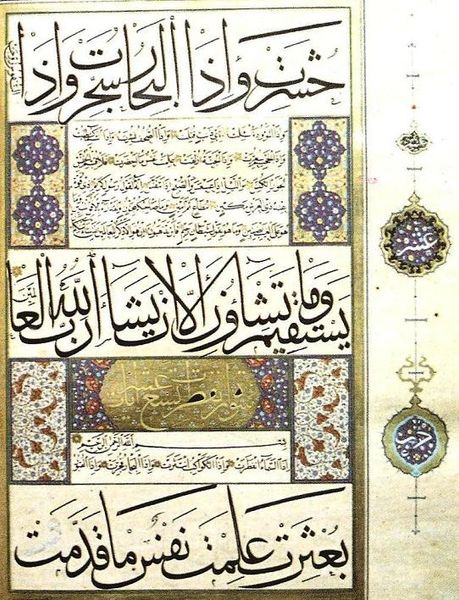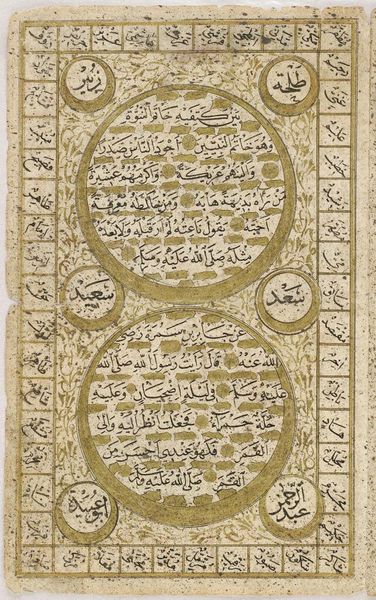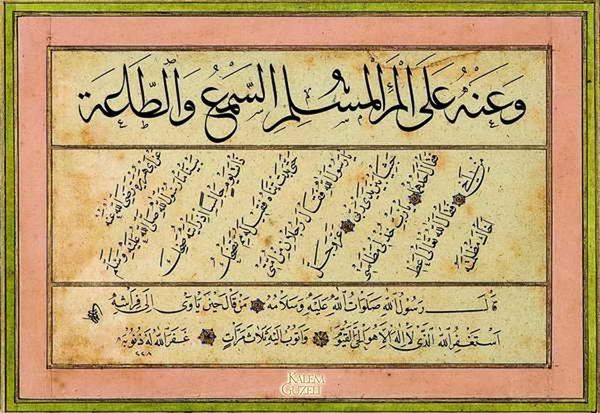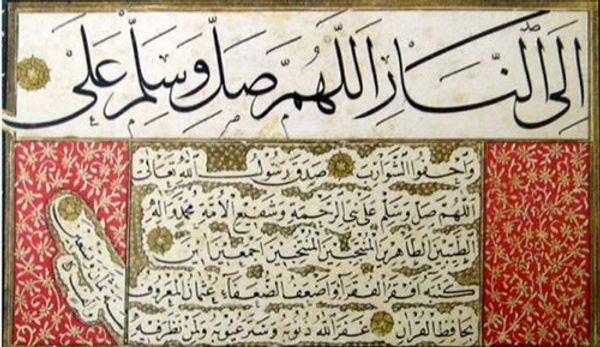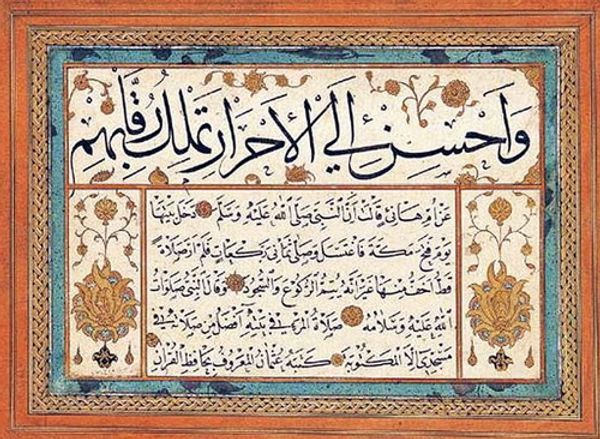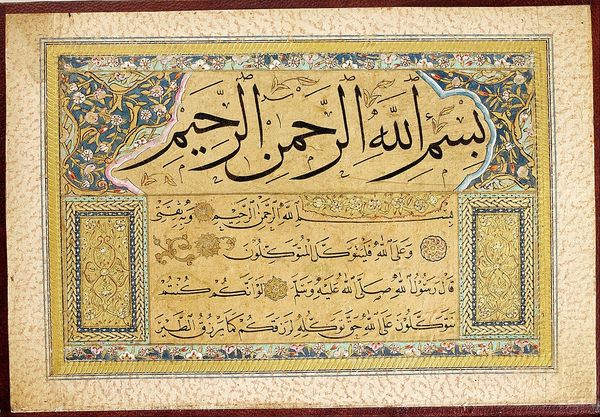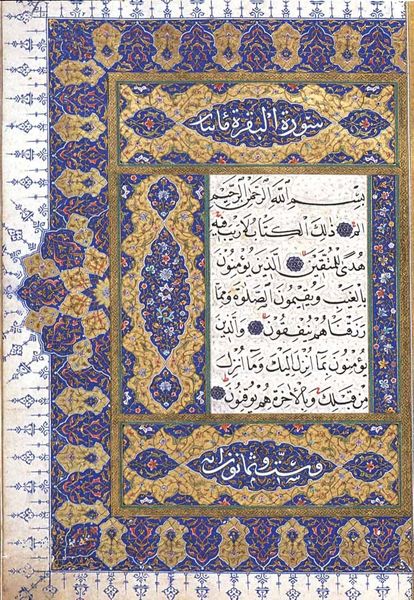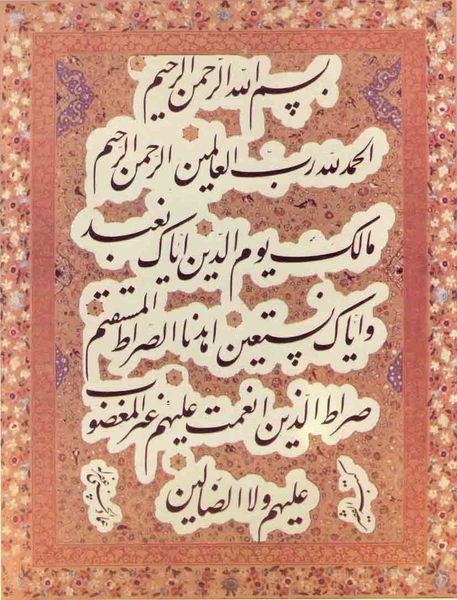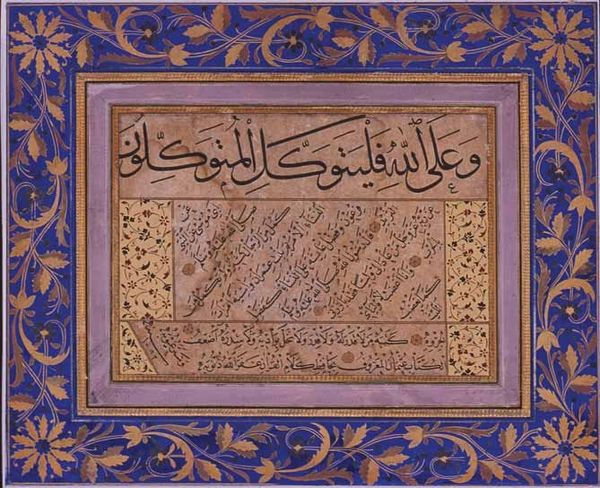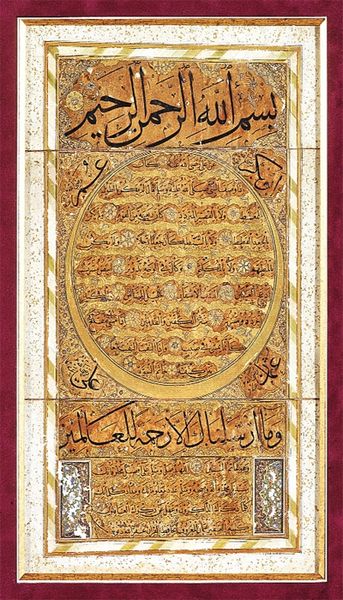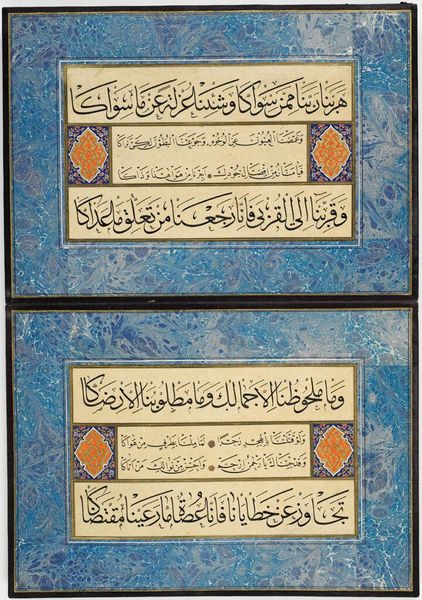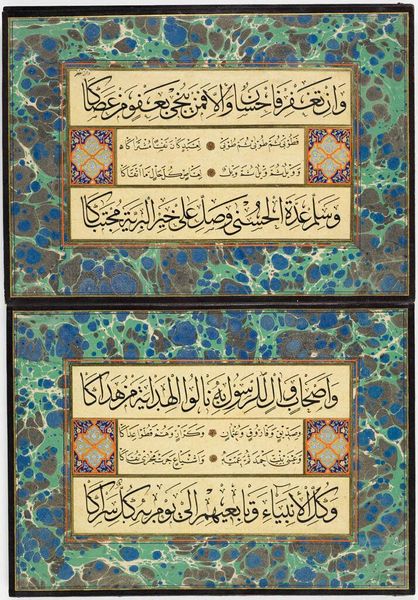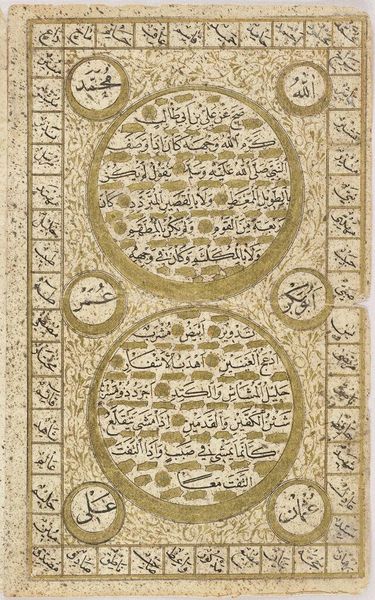
textile
#
textile
#
geometric
#
line
#
islamic-art
#
decorative-art
#
miniature
#
calligraphy
Copyright: Public domain
Curator: We are looking at "Levha - Hadis-i Şerif," a textile piece with calligraphy, likely Ottoman, although it lacks a precise date. It’s a compelling example of Islamic decorative arts, don't you think? Editor: Absolutely! The intricate details and geometric patterns are striking, creating a mesmerizing visual effect. What I find particularly interesting is how calligraphy becomes the primary form of artistic expression here. What stands out to you in this piece? Curator: I'm immediately drawn to how this work served, and continues to serve, a devotional function. Islamic calligraphy is never *just* decorative. The careful rendering, the placement of specific texts, all point to a didactic and spiritual purpose. Who had access to view and interpret such a piece and what message did it impart in its time and context? Editor: That's a great point. Considering its historical context, the intended audience would likely have been educated elites within Ottoman society who were fluent in Arabic and possessed a deep understanding of Islamic teachings. But did the artistic expression or materials themselves, outside of the linguistic content, have social implications as well? Curator: Yes, certainly! Textiles, especially finely worked ones like this, held social and economic significance. They were markers of status, often commissioned by wealthy patrons or institutions. Think about where something like this might be displayed – a mosque, a palace, a wealthy home. Its visibility was certainly tied to social structures. Also consider, in a society with varying literacy levels, the visual power of calligraphy extended beyond simply reading the text; it was about seeing and revering the divine word made manifest through art. Editor: So, its significance transcends mere aesthetics. This piece blends artistry and cultural values to represent an epoch of strong beliefs and structured social hierarchies. That's helpful to keep in mind! Curator: Precisely. Examining such objects through a historical lens helps us unpack their multi-layered meanings and understand how art actively participates in shaping cultural narratives. Editor: I'll remember that in the future! Thanks for providing all the food for thought!
Comments
No comments
Be the first to comment and join the conversation on the ultimate creative platform.
